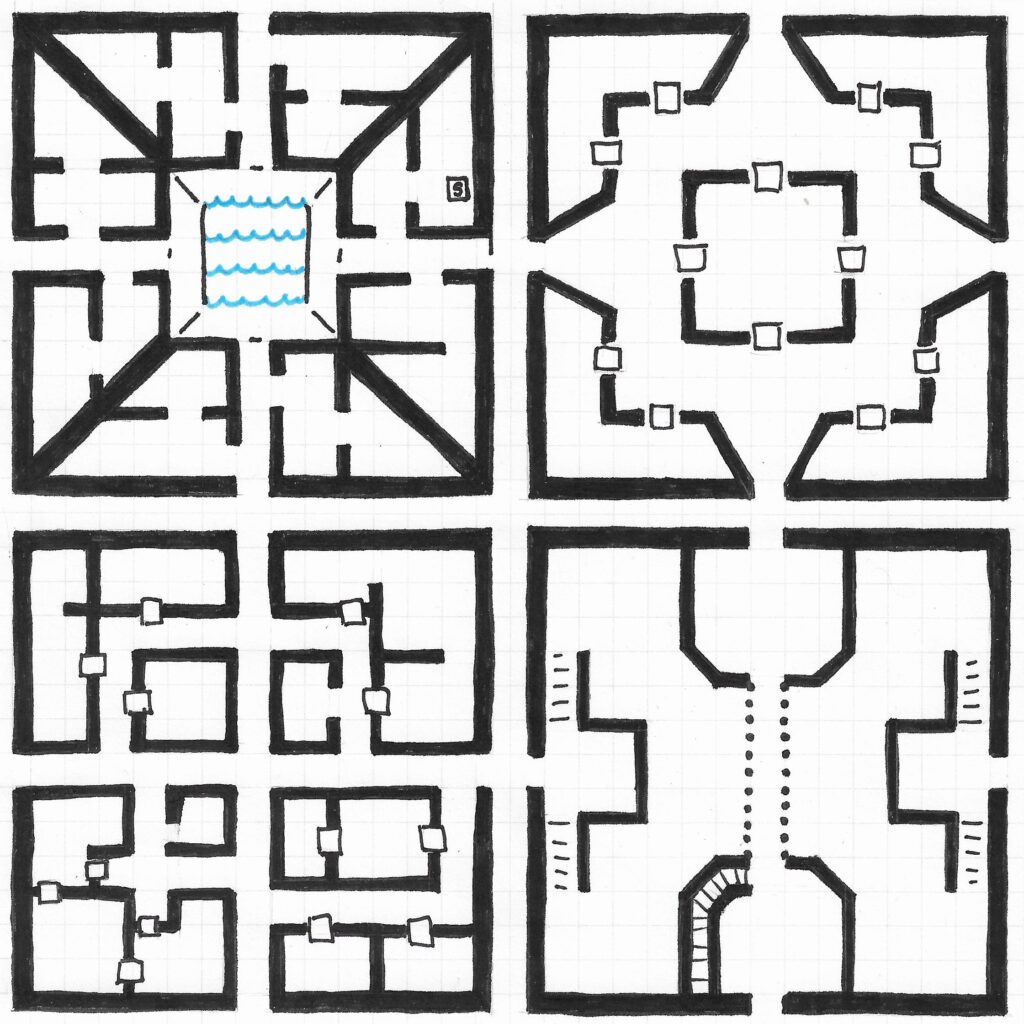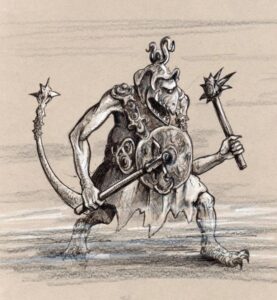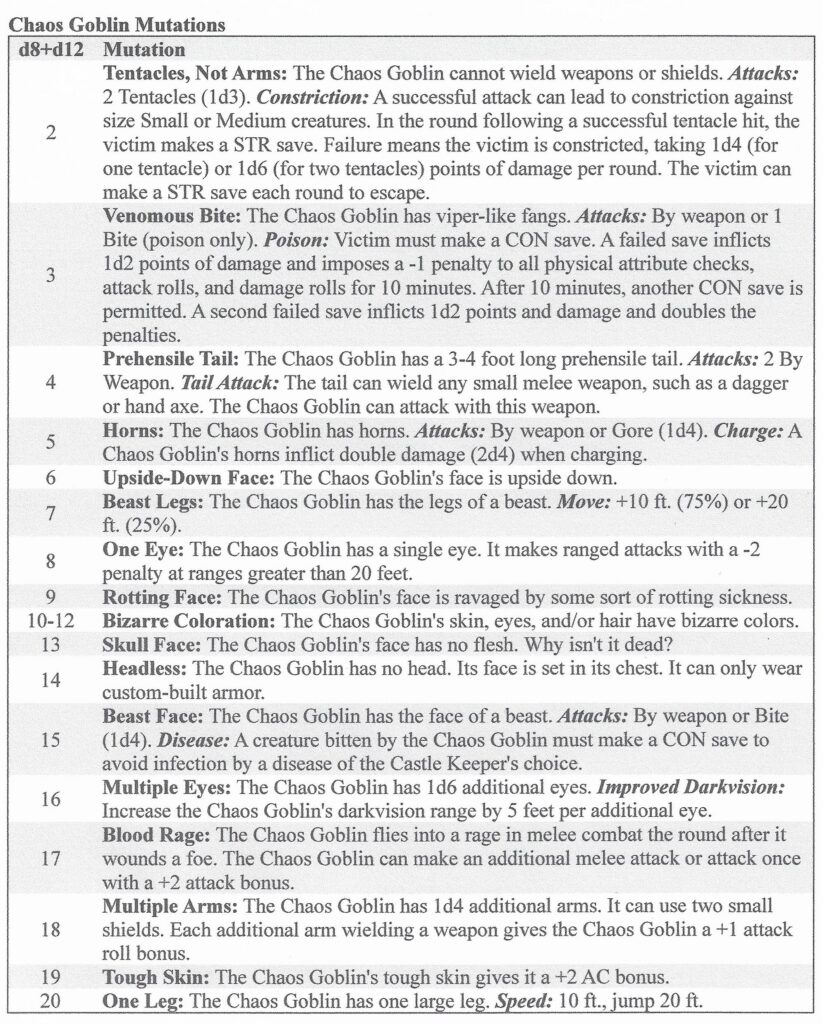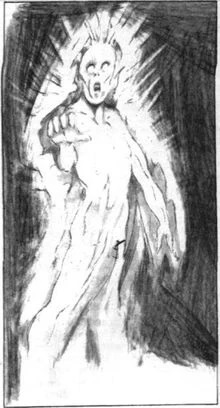Wednesday Lore: Goblin Spider Lair
The rubble from a long destroyed tower helps conceal the narrow flight of descending stairs that are the entrance to Bosukumo the goblin spider’s lair. Bosukumo’s vicious humanoid servants creep forth on the darkest nights to do their master’s bidding.
The Entry Level
The aforementioned stairs lead down to a chamber shaped somewhat like half an octagon. The stench and smoke makes breathing difficult. Most of Bosukumo’s followers are goblins, and this level is overcrowded with those squabbling, cowardly, vile humanoids. There are two exits from this chamber.
The exit closest to the stairs’ terminus opens to a columned bridge leading to a second half-octagon room. The bridge is 20 feet higher than the floor below, which is where most of Bosukumo’s goblin followers lair. The stench and smoke from the wafts up from the lower floor.
The goblin rank-and-file set up their beds of dirt and rags along the walls, leaving the floor open for fighting, cooking, et cetera. There is little airflow through Busokumo’s lair. Smoke and stink hang in the air, and the floor and lower walls are smeared with filth.
Thirty feet to either side of the bridge, there are two steep stone staircases leading up from the lower floor to square rooms. Under the bridge, the goblins store a half dozen crudely fashioned ladders long enough to reach up to the bridge.
The Outer Archways
All four geomorphs have archways on their outer walls. Each archway leads to a twisting tunnel carved through stone. Those who constructed these tunnels and the four levels of Bosukumo’s lair imbued their work with strong teleportational magic. Consequently, to where each tunnel leads is determined randomly. The specifics of how this magic works will be detailed next Wednesday.
The Eight-Pointed Star Level
This level is dark and cold, and an oppressive, sub-audible quavering tone hums ceaselessly. The original architects built this level as a storehouse for otherwordly trophies. The L-shaped halls in each corner of the level have bizarre artifacts displayed in cases arranged along the outer walls. The square chamber in the center of the level has shelves holding books and scrolls collected from numerous non-good planes of existence.
All of the doors on this level are magically locked. Attempts to force the doors open may trigger wards designed to rout, disable, or kill would-be robbers.
Halls and Rooms Level
The air quality here is bad, but not as bad as the entry level. Tougher humanoids in Bosukumo’s service lair here, so adventurers will encounter boss goblins, some orcs, and shamans who believe/claim they gain their spells from Bosukumo itself. The humanoids in this area are tougher and more disciplined than the rank-and-file goblins in the Entry Level.
The Water Pit Level
Bosukumo lairs here. This level is divided into four separate sets of rooms around a center square pit that drops down to well of cold water. Bosukumo can scurry along walls and across ceilings, so its movement here is not hindered by either the central pit or the thick webs that line the floor, walls, and ceilings. In one of the chamber is a secret door in the floor. If found and opened, a shaft descending into darkness is revealed. This shaft leads down to another set of magically connected geomorphs.






